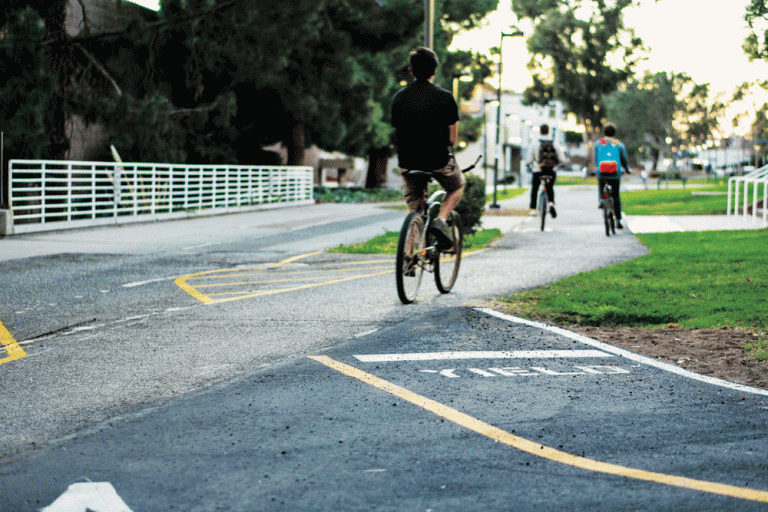
Spencer Wu
Copy Editor
Ever notice that most University of California, Santa Barbara bikers violate California law by not wearing a helmet? Though helmets do significantly increase bike safety, does this mean that helmets should be optional and not required? Most people, including myself, currently undermine the law by ignoring it.
California law states that “anyone under the age of 18 must wear a helmet when riding a bicycle on a street, bikeway, or public bicycle path or trail.” The law has a large potential effect on U.C.S.B. since biking is such an integral part of the average university student’s lifestyle. As of 2011, U.C.S.B. received the honor of a Gold-Level Bicycle Friendly University which is a reflection of campus biking infrastructure and safety practices.
With the law in place and a distinction awarded, how come more students do not wear helmets while careening down the bike paths? It seems counterintuitive that thousands of students do not protect the most important part of their body while riding their Fixies, cruisers, or mountain bikes at high speeds.
Given unknown variables like an inexperienced biker not yielding or someone texting while biking, you would think that more students would strap on headgear before pedaling down the road. When you get into a car, the first thing you do is put on your seatbelt to protect yourself from any accident that might occur. Why does another form of transportation make any difference?
You’ll be hard-pressed to find a student with any head protection or gear to prevent injury on U.C.S.B.’s campus. Clearly, it is more common to see a helmet on the head of a recreational biker or a professor going from his or her office to a lecture hall. Before I moved to school here, my aunt got me a helmet. I immediately declined to wear it because I deemed it too “lame” and “uncool” to wear.
I only felt this way because it was rare to spot a helmeted biker on the path during campus visits and in online videos or pamphlets. If many incoming freshmen have this sort of mentality, this will be a safety concern that will only worsen over the years.
The norm on campus is to go without headgear. However, changes can be made to alter the bike culture in Santa Barbara. There should be certain measures, at least preliminary ones, to ensure the safety of student bikers. For starters, there could be a safety training guide or instructional video that first year students must take before attending school. This is equally as important as the Alcohol & Drug education and the Gaucho For Your Information courses. They all aim to improve the quality of students’ lives while they maintain safety standards. With explicit standards, students will be more aware of the dos and don’ts of biking on campus, general bike etiquette, and major safety rules and tips to prevent crashes and subsequent injuries.
Although it may be difficult to catalyze a paradigm shift to ensure a 100% helmet-wearing rate, it is definitely feasible to enact tangible, productive change on campus. Through the implementation of a mandatory lecture or periodic training sessions, there will be a safer environment for bikers from campus to Isla Vista.










